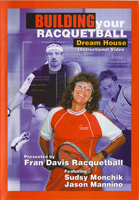The Art of Doubles: Court Position
[caption id="attachment_1322" align="alignright" width="200"] “Championship Racquetball[/caption] The art of court positioning is just as important in doubles as it is in singles. The downfall of most doubles teams is that the partners act as if they are playing singles and are very haphazard about where to go after the serve, after the return of serve, and during the rally. When you play doubles you want to be like a piece on a chessboard, knowing how to position yourself on the board as every move can cost you. (more…)










